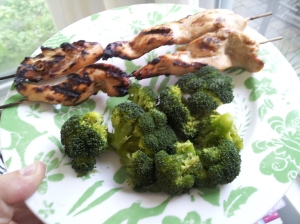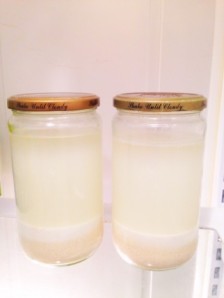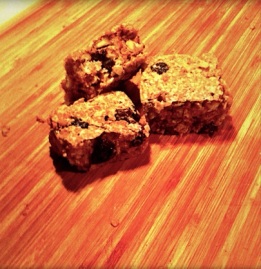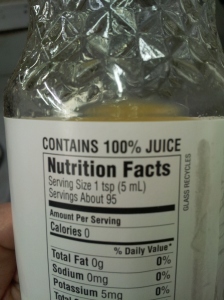Natural living expert Sophie Uliano details why she loves Tula's CocoKefir on the Home and Family Show on Hallmark Channel.
Sophie Uliano on Why She Loves Tula’s CocoKefir
Filed under Uncategorized
Fortify Tiny Guts Against Halloween Sugar
Halloween is a fun night for Tula and her sister Thea. They love getting dressed up and going out after dark with friends and family to knock on doors. Tula and her sister don’t eat the candy though. We purchase the candy from them and throw it away. We also give them some gut-healthy sugar free treats that evening.  At our house, rather than pass out candy, our family hands out little toys and trinkets. Neighbor parents tell us their kids look forward to getting something different at our house.
At our house, rather than pass out candy, our family hands out little toys and trinkets. Neighbor parents tell us their kids look forward to getting something different at our house.
For most kids though, Halloween is a time of gross over consumption of sugars. This comes at a time when kids’ immune systems are challenged with more exposure to colds and viruses at school. Given studies that show the importance of healthy microflora in immune function, this is a good time of year to fortify children’s fragile microbiomes with healthy bacteria.
The powerful probiotics found in Tula’s CocoKefir and CocoYo not only help support good immune system function, they will also consume some of the sugars the kiddos eat this time of year and take some of the load off their tiny endocrine systems.
Enjoy this fun holiday and know there are steps you can take to minimize or eliminate the harmful effects of sugar overconsumption.
Filed under Uncategorized
What is a Healthy Microbiome vs. an Unhealthy One?
The term “microbiome” is used to describe the commensal collective genetic material present within a specific region of the body. Put simply, it is all the bacteria and yeasts that inhabit our bodies. When our microbiome is working in synergy with us and providing benefits to us, we call it “healthy.” When this community is working against our health, we call it “dysbiotic” or “unhealthy.”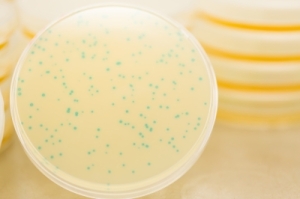
Focusing for a moment on an unhealthy microbiome…it is generally found that people with an unhealthy microbiome have pathogenic yeasts living in disproportionate amounts in their guts. Yeast levels are up; good bacteria levels are down. A pathogenic yeast is a species which does not work in synergy with our health, but instead works against it. The most common are Candida Albicans. What promotes the growth of these pathogenic yeasts? Answer: Sugars. Yeast eat sugars. They need them to survive.
Recently, research is suggesting these bad yeasts (and other pathogenic bacteria) may act like a parasite and drive “the host” (us) to consume the foods they need to survive. You can read more about this idea in this New York Times article.  So as the sugars we eat promote more yeasts to grow in our guts, those yeasts turn around and make us eat more sugars. The snake begins to eat its own tail. Additional information on the gut/brain connection can be found in this Science Friday episode.
So as the sugars we eat promote more yeasts to grow in our guts, those yeasts turn around and make us eat more sugars. The snake begins to eat its own tail. Additional information on the gut/brain connection can be found in this Science Friday episode.
Another bit of information to consider here is other foods that feed yeasts. Starchy carbohydrates are metabolized in our bodies as glucose (a sugar) and feed yeasts too. Food ingredients that contain starchy carbohydrates are ubiquitous in our modern prepared foods and include flours (wheat, corn, rice, tapioca starch, etc.) and starchy vegetables like potatoes. If we consider all the foods made with a combination of sugar and these few ingredients, we account for perhaps 90% of all the food offerings at conventional grocery stores and restaurants (with fast food restaurants being the greatest offenders, but not the only ones.) These ingredients are cheap and afford strong profit margins for food producers and manufacturers.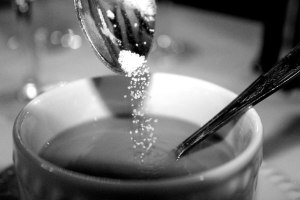
People in the U.S. consumed 1 million metric tons of sugar in 2013 (read more). That’s over 73 pounds of sugar per person per year! Sure we also eat about 415 pounds of vegetables per person according to USDA data quoted in a recent NPR article, but those data included corn and potatoes. Corn isn’t even a vegetable – it’ s a grain. Never mind that, they feed bad yeasts. The same article mentions we eat 273 pounds of fruit, but it is quick to point out it is mostly water weight. I will be quick to point out that fruit sugars feed yeasts too. Additionally, the article states we consume about 630 pounds of milk, yogurt, cheese and ice cream per year. How much of that total is milk, yogurt and ice cream would be interesting to know since sugars are often added to those three examples in high amounts (thinking chocolate milk in the case of the milk).
So those cravings for sweets like ice cream, soda, chocolate, yogurt (which typically contain soda-like sugar levels) and breads, pastas, risotto, etc. can be a good indicator of the health of our microbiome.
Medical practitioners often point people to probiotics to help them promote a healthier microbiome in their gastrointestinal tract. Better yet, people can consume fermented foods which are cultured with probiotic bacteria and are more effective. But the effects of consuming sugar and high-glycemic carbohydrates like those mentioned above should not be overlooked. Strict limits on these yeast-feeders will go a long way toward improving the health of one’s inner microbiome.
“But the human body needs carbs for energy!” you say.
This is correct, but there are healthier, lower-glycemic carbs available to us. And we don’t need to eat as much carb-laden foods as we do on average. Good alternatives include quinoa, millet, buckwheat, and amaranth.
“I’m gluten free. Does that help?”
Avoiding gluten does help many as the glycoprotein gluten can cause inflammation in the gut (often unbeknownst to us) and inhibit healthy bacteria there. But be aware that gluten free food producers often use high-glycemic carbohydrates such as rice flour, corn flour and tapioca starch as substitutes for wheat flour and alternative sugars like brown rice syrup or agave, which all feed yeasts very well. Switching to gluten free cupcakes, cookies and brownies does not do one’s microbiome any good. Similarly, consuming products promoted as “gut healthy,” such as kefirs that contain soda-like sugar levels, does little to improve the health of our microbiomes.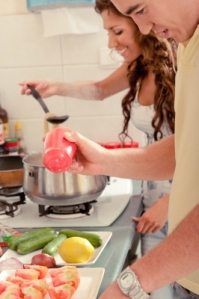
To sum this all up, the best approach for fostering a healthy inner microbiome is to first avoid the foods that feed “the bad guys” in your gut and second, to promote “the good guys” by consuming fermented foods and probiotics. Turning around the damage done by years or even decades of eating a yeast-promoting diet does not happen overnight. It can take months and even years to steer the ship in another direction, but it is being done by people every day and they are living healthier, happier lives for the effort.
Photos courtesy freedigitalphotos.net
Filed under Uncategorized
Coconut Amino Pluot Marinated Chicken Skewers
This unusual combination yields a most delicate and wonderful flavor. While chicken is featured here, this marinade would be an equally welcome flavor add to pork or beef on skewers. Grilling lends even more flavor.
Ingredients:
2 lbs chicken breast, cut into strips (or pork or beef)
2 ripe sweet pluots or plums
1/3 cup Coconut Secret coconut aminos
1/4 cup finely chopped onion
1 clove garlic finely chopped or crushed in a garlic press
Remove the skins and pits from the pluots/plums. Discard the pits. Eat the skins. (They’re good for you.) Use a small food processor or handheld blender to liquefy the flesh of the pluots/plums. You may be able to do this with a little more effort by hand – mashing them with a fork. However you accomplish this, put the resulting juice in a bowl. Add the coconut aminos, onion, and garlic to the bowl and mix well.
Pour this marinade mixture over the strips of chicken in a ziplock bag. Massage the bags to coat the chicken evenly and refrigerate for at least 4 hours and up to 12 hours.
Skewer the chicken strips and grill for 10-15 minutes, turning once halfway through.
Hint: If you are grilling a fatty meat like pork or beef, try to avoid letting the fat drip onto the flames (gas grill) or coals, as this creates carcinogenic chemicals that get on your food. Using indirect heat is the healthy way to grill.
Filed under RECIPES!
Cultured Quinoa Milk
This non dairy milk recipe is a great alternative to nut and seed milks!
Adapted from Body Ecology
- 2 cups raw quinoa
- 1 quart filtered water
- Pinch sea salt
- ¼ cup Tula’s CocoKefirTM
- Alcohol free vanilla or stevia (optional)
Method:
Rinse and soak the quinoa for 8 hours or overnight at room temperature with a pinch of sea salt. Rinse and drain quinoa and put in a blender. Blend with the water until it turns very white and creamy. You can use a nut milk bag or cheesecloth to filter your milk and separate out the quinoa pulp. Pour strained quinoa milk into a sterile glass jar. Add ¼ cup CocoKefirTM and close the jar tightly. Leave the jar out on your counter or in a thermal lined bag for about 24 hours. If flavoring with vanilla and/or stevia stir in and refrigerate!
Note: You can see from the photograph, because there are no preservatives or stabilizers the milk will separate. Simply shake to remix!
Filed under RECIPES!
When It Comes to Probiotics, More Species are Better
There are many recent studies focused on the effects probiotics have on a myriad of health conditions and challenges. One overarching truth that seems to be emerging from this growing body of evidence is that, indeed, probiotics are good for us. Our health and wellbeing are directly tied to the microbiota in our guts.
But there is another interesting development that is worth noting; there are a number of studies that, taken together, strongly suggest multispecies probiotics prove more effective than probiotics of a single strain or only a couple strains.
In a review published in the Journal of Food Microbiology by H.M. Timmerman, et al., the authors concluded there was enough evidence to suggest multispecies probiotics are more efficacious than single strain or even multistrain probiotics.
A single strain probiotic (called monostrain in the article) – defined as a probiotic supplement containing only one strain of beneficial bacteria.
Multistrain was defined as a probiotic supplement containing more than one strain of beneficial bacteria from the same species or at least of the same genus.
Multispecies contain strains from more than one genus.
We are often asked why Tula’s®CocoKefir™ works so well. Perhaps the answer to the question lies in the fact that, not only do our products contain 7 beneficial strains, they come from 5 different genera and interact synergistically with each other. We know this to be true because they worked for our daughter, they work for us, and we get calls and emails every day from customers who tell us they work for them.
This being said, we do not mean to imply that single strain probiotics are not helpful. We encourage people to get as many different strains of known beneficial bacteria in their diet as possible. In nature, biodiversity serves to promote a healthier ecosystem. The same is true in our bodies. If you take a single strain probiotic supplement, try taking it with CocoKefir™ to give it a boost. The same nutrients that feed the beneficial bacteria in CocoKefir will feed those found in your probiotic supplement.
Because, as always…Good Health Begins in the Gut.
Timmerman, H.M., et al. (15 November, 2004) Monostrain, multistrain and multispecies probiotics – A comparison of functionality and efficacy. International Journal of Food Microbiology. Vol. 96, Issue 3, p.219-233. http://www.sciencedirect.com/science/article/pii/S0168160504002855
Filed under Uncategorized
Wanted: Real Coconut Water – Not Concentrate
Do you ever wonder if your favorite coconut water drink is real coconut water? You should. Here’s why.
Under federal regulations and guidelines, coconut water is treated like a fruit juice. Of course we know it isn’t a fruit juice, but we’ll let that inconsistency go for the time being.
Beverages that contain fruit juices (remember we are talking about coconut water here) are required to state how much juice they contain as a percentage of the total volume of the product. For example, a package label might say “30% juice.” A reasonable person would take this to mean that 30% of the contents of the package are juice and 70% other ingredients, such as water perhaps. (Be careful relying on “reasonableness” when it comes to food labeling laws; there are many inconsistencies in our food code.)
A label that states “100% juice” does not, in all cases, mean that 100% of the contents are real juice. Juice concentrates are allowed and are often used. The FDA maintains a table of Brix values for most juices.
“What is Brix?” you ask.
Brix is a unit of measure for the concentration of the solid constituents in an aqueous solution. More specifically, it is a measure of the sugar content of a liquid – expressed in Degrees Brix (ᵒBx). The higher the ᵒBx, the more sugars are dissolved in it. It is commonly used measurement in wine production and, as you are currently learning, in juice production.
So, a bottle of orange juice that states “100% juice” can actually be a mixture of filtered water and orange juice concentrate, mixed to 11.8ᵒBx. (21CFR 101 Sub. B §101.30)
“Why is that a problem?” you ask.
First, concentrated sugars, even if they are concentrated fruit sugars, are metabolized within the body in the same way a refined sugar is. Concentrated orange juice will spike your blood sugar in the same way refined table sugar or high fructose corn syrup will. They cause your pancreas and endocrine system to work harder creating insulin to cope with the increase in blood sugar. Concentrated juices may play a role in the increase in the number of people with diabetes in our country today.
Secondly, nutrients in concentrated juices are not as bioavailable as those found in fresh juices. Orange juice from concentrate will not nourish the body in the same way fresh squeezed orange juice will.
“What does all this have to do with coconut water?” you demand.
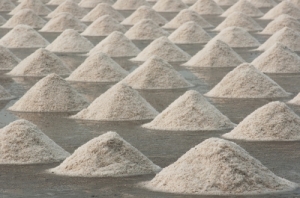 There are companies in Southeast Asia that produce coconut water concentrate (referred to in the industry as CWC) and sell their product to coconut beverage manufacturers in the federal guidelines allow coconut water manufacturers to label their products as “100% coconut water” as long as they mix the CWC with filtered water to a minimum concentration of 5ᵒBx.
There are companies in Southeast Asia that produce coconut water concentrate (referred to in the industry as CWC) and sell their product to coconut beverage manufacturers in the federal guidelines allow coconut water manufacturers to label their products as “100% coconut water” as long as they mix the CWC with filtered water to a minimum concentration of 5ᵒBx.
The same deficiencies inherent to concentrated fruit juices apply to CWC. Blood sugar spike and stress on the pancreas and endocrine system will be more pronounced with a coconut water concentrate. Nutrition will be compromised.
So, that coconut water you’ve been drinking may actually be a reconstituted coconut concentrate.
This is not to say all coconut water manufacturers use CWC in the manufacture of their products, but some do.
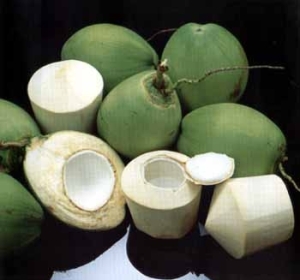 At Tula’s®CocoKefir™ , we never use CWC. In fact, we don’t even use bulk, pasteurized coconut water (another commercially available version). We extract real, raw coconut water from whole coconuts, one by one. This is a time consuming and expensive process, but our testing has proven that this is the only way to deliver high concentrations of thriving, viable probiotics, as well as bioavailable nutrition.
At Tula’s®CocoKefir™ , we never use CWC. In fact, we don’t even use bulk, pasteurized coconut water (another commercially available version). We extract real, raw coconut water from whole coconuts, one by one. This is a time consuming and expensive process, but our testing has proven that this is the only way to deliver high concentrations of thriving, viable probiotics, as well as bioavailable nutrition.
We’ve never tried to ferment CWC and we never will. Admittedly, we have had bulk, pasteurized coconut water suppliers urge us to test their coconut water and we have, reluctantly. The results were not good. The probiotics did not grow to the same high levels as they do in our fresh coconut water and the flavor was terrible. The testing proved to us what we intuitively knew; the best coconut kefir comes from fresh, raw coconuts. That is what we use and that is what we will continue to use – no filtered water, no pasteurization, no CWC.
We are committed to this way of doing things because we know – Good Health Begins in the Gut.
Filed under Uncategorized
Chocolate Whoopie Pies & Pumpkin Filling
Our family enjoyed this fun holiday cookie, gluten free, dairy free and sugar free!
Adapted from Elana’s Pantry
Chocolate Whoopie Pies
– 1/4 cup coconut flour
– 1/4 cup cacao powder
– 1/4 teaspoon sea salt
– 3 eggs, organic if possible
– 1/4 cup coconut oil
– 1/4 cup Lakanto
– 1/8 teaspoon vanilla stevia or alcohol free vanilla extract
Method
Line a baking sheet with parchment paper. Pulse together dry ingredients in a food processor. Pulse in wet ingredients until smooth. Using a tablespoon sized spoon, scoop the batter into 16 portions and onto prepared baking sheet. Bake at 350 for 7 to 9 minutes. Cool for 1 hour.
Pumpkin Whipped Cream
Ingredients
– 1 can coconut milk (be sure not to shake up the can)
– 1/4 cup freshly roast pumpkin or canned pumpkin puree
– 1 tablespoon Lakanto
– 1/2 teaspoon cinnamon
– 12 drops vanilla creme stevia or teaspoon alcohol free vanilla
Method
Scoop solid cream off the top of a can of coconut milk (you can refrigerate the can to make this a little easier). Place the coconut cream in a high powered blender or Vitamix. Add pumpkin, Lakanto, cinnamon and stevia (or vanilla) to blender. Puree on highest setting. Mixture should be thick, occasionally stop the blade and scrape down sides. Continue to puree until smooth.
Assemble the whoopie pies by filling the chocolate cookies with the pumpkin whipped cream. Enjoy!
Filed under RECIPES!

